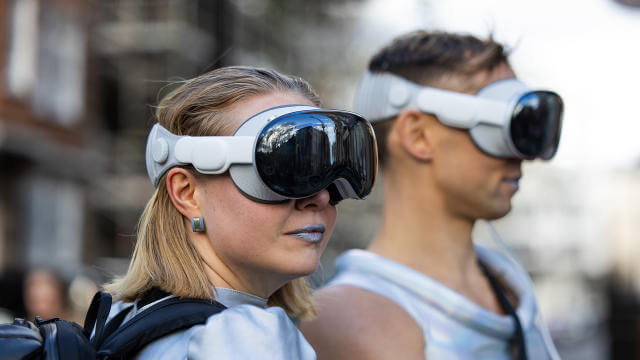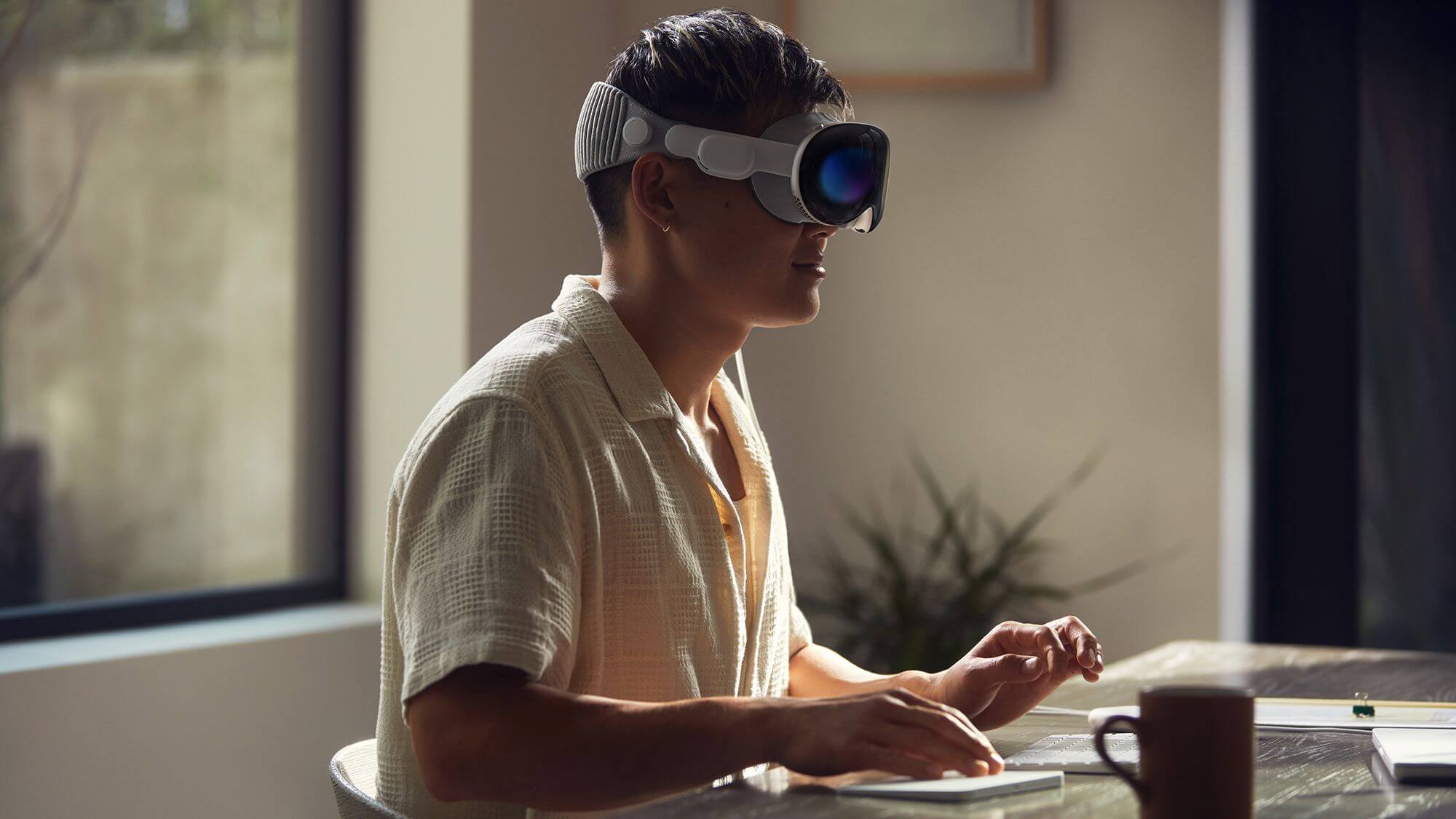Insights From The Blog
Best of the Best XR Headsets: Apple Vision Pro versus its Credible Alternatives
It wasn’t that long ago that XR headsets were pretty much the same; they were good, but there was little to choose between them. Then, the Apple Vision Pro launched and suddenly everyone was playing catch-up. The Vision Pro was a game-changer that pushed performance up at least a couple of notches. But it came at a price, and one that was significantly more expensive than competition, and that distinction initially prevented it becoming a best-seller.
The cold fact is that the Apple Vision Pro does not have any direct competitors in the sense that it is a “spatial computer”, as opposed to a dedicated headset. However, Meta’s Quest 3 and Sony’s PSVR2 are the two most well-known virtual reality headsets, and it is inevitable that the Vision Pro will be compared to them.
Despite the fact that Meta Quest 3 and PSVR 2 are primarily intended for gaming rather than general XR use, there is a significant gap between them and the Apple Vision Pro in terms of both price and capability. But wait, there’s also the Varjo XR-4, which is in a similar price range to the professionally-priced Apple device (a tad higher for the ‘Secure’ edition) but actually beats it on tech-specs, and the Pimax Crystal, which, like the PSVR2 is a tethered device, but has plenty of power when it is connected.
To paraphrase post-WWII Prime Minister, Harold MacMillan, when it comes to headsets, we’ve never had it so good, but is the Apple Vision Pro really in any danger of losing its current top spot as market leader? While we covered and compared the Apple device with the new-to-market Meta Quest 3 a while back, it’s worth having another look at the Vision Pro. Out of the box, the Apple XR device has a number of interesting features that trump the others:
- 3D Photos and Videos. Apple Vision Pro can record videos and take spatial photos via its 12 cameras and 6 spatial microphones. This allows the capturing of events in real time and then reliving them later in full 3D.
- Virtual Avatars. With the help of a camera, Apple Vision Pro can create a virtual avatar for making calls or other communication apps. The avatar can detect the user’s facial and eye movements to replicate them and provide greater realism.
- 3D Meetings. Facetime meetings will also have their own augmented reality version, where bespoke avatars can be designed and used. The user can have a meeting, viewing the call participants in separate windows in front of them.
- Spooky 3D Eyes. An external display can reveal the user’s eyes to the outside world when they put on the glasses. The lenses will seem black when the user is completely engaged in VR. In mixed reality, a depiction of the eyes emerges when seeing the real surroundings. By doing so, passers-by will be aware that the user is able to communicate with them. Look both weird and cool at the same time.
And being an untethered device with superior passthrough technology, you can wear the Apple headset anywhere without fear of bumping into furniture and casually-discarded shoes, or pets. This is a pretty groundbreaking feature and one that has already attracted the attention of a slew of YouTube and Instagram users, who have demonstrated the headset can be used outside with confidence, as long as you don’t mind looking a little bit nuts. That feature alone makes the Vision Pro pretty groundbreaking and leaving the other manufacturers playing catch-up.
But catch-up they will. Something like passthrough is just an engineering task, and with the Meta Quest 3 already not far behind on specs, and the Varjo XR-4 beating the Apple on paper, the chase is on.

But at the moment, Apple has the upper hand. The Vision Pro is sufficiently powerful to be regarded as a wearable computer, and all of that power can be delivered to the headset to make some truly remarkable content. By comparison, the current slew of headsets – apart from the Varjo – that deliver comparable content need the power of a decent PC behind them, and have to be tethered. That means that they can’t be worn in the street and are seriously hindered in their usability.
However, none of the standout features of the Vision Pro are patentable, and you can bet that all of the major developers – Meta, Sony, Varjo etc – are picking Apple Vision Pros’ to pieces and reverse-engineering the headsets to see how they can replicate – or better – the power of them. Over the next year to eighteen months, we are fully expecting to see these companies develop and release headsets that offer the power of the Vision Pro.
Of course, Apple aren’t going to sit on their hands and wait for their competitors to catch them, and will no doubt be tinkering with their current headset right now. However, there has been much written about Apple’s plodding development arc; this is a company that succeeds in launching an iterative iPhone every year, based on minimal real changes. If they choose the same route with the Vision Pro, there is a distinct danger that the opposition could quickly develop headsets of comparable specifications, but with a cheaper purchase price.
Apple are in a good position now, with an outstanding headset that has tons of potential to do more. Price is perhaps the biggest issue here – the Vision Pro still has a ticket price of £3,499 – and is only available through limited outlets, which basically means Apple Stores. Of course, we are used to paying a premium for quality products, but limited accessibility to products and high prices are the perfect ingredients for making a niche product, rather than a mainstream market leader.
Apple are in a situation that is very similar to the launch of the iPhone 3g – the first real smartphone. No one else had a product like that at the time and Apple could have completely dominated the smartphone market from that point. But history has shown that far-Eastern designers are very fast learners and have both the financial backing and the technical know-how to implement new designs quickly.
With the growing Metaverse, and increasing applications for XR in business, education, healthcare and social areas, higher spec headsets are going to be an enormous, global, business. But people are also watching the pennies and are more likely to pick a headset that fits their budget, rather than a bespoke and expensive product like the Vision Pro, when the performance specs are either very close or possibly even better.

We at Unity Developers love our Apple Vision Pro, and use it as much as possible, but by putting this stake in the technological ground, Apple have simply challenged other developers to do better. We think that they can do at least as good, and undoubtedly for a cheaper price.
Rumours of the Meta Quest 4 being available for launch in 2026 are already surfacing, and there have even been some comments from market leaders. Following the release of the Apple Vision Pro, Mark Zuckerberg took to Instagram to criticise the Apple headgear and highlight the features that the Quest 3 offered. He said that Apple’s eye tracking is “really nice,” but then went on to say that the Quest Pro was the first to include such sensors and that they want to “bring them back in the future.” Read into that what you like.
We expect the Meta Quest 4 to be a real game-changer in XR delivery, possibly being comparable to the Apple Vision Pro but at a characteristically lower price. Apple, if they are really smart, will pay heed to that and will do more than just tinker with what they have. If they want to keep selling products at what is essentially seven times the cost of its near-competitors, then they need to offer consumers an XR experience that is worth the money.